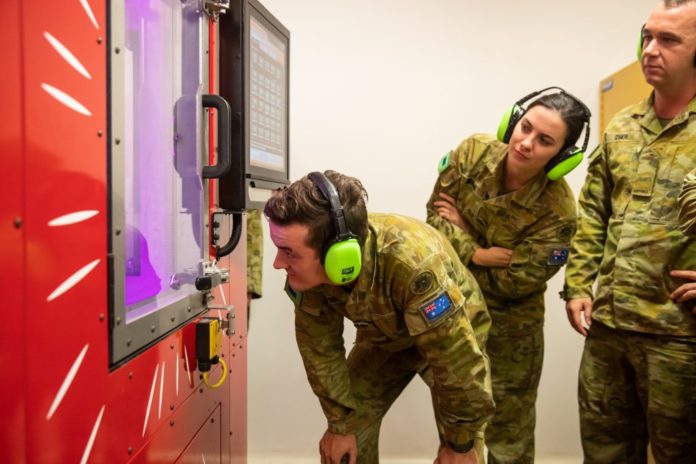The Australian army invests $1.5 million investment into a 12-month pilot program of SPEE3D metal additive manufacturing technology.
The Australian manufacturer partnered with the Advanced Manufacturing Alliance (AMA) and Charles Darwin University (CDU) to deliver the program.
During this program, soldiers will learn everything they need to know about 3D Printing, design and the printing process from CAD software to printer operation, part post-processing, testing and certification. It goes without saying that a key focus will be on how to efficiently leverage SPEE3D’s large-format WarpSPEE3D 3D metal printer, installed on-base and deployed in the field for multiple Army exercises.
SPEE3D technology is a metal cold spray technology that enables the production of industrial metal parts in “just minutes”, rather than days or weeks.
Unlike other technologies that rely on high-power lasers and gasses, this process requires the power of kinetic energy, which allows 3D metal printing in the field, at affordable costs. The Army’s goal is to increase parts available to its teams at a fast pace, compared to what the regular supply chain can provide.
Armies interest in Cold Spray Technology as a repair technique
In a recent study, researchers looked at the importance of cold spray technique in battlefields.
It turns out that in cold spray, spray powder is injected into a gas jet which accelerates the material to velocities above a unique temperature-dependent threshold that enables metallurgical and mechanical bonding to the substrate at relatively low temperatures. Operators can deliver un-limited thickness in a controlled way which makes it an ideal candidate for additive manufacturing.
Furthermore, “It’s cheaper to repair a part than to replace it, and you get the equipment back in service faster. The Army’s primary interest is unit readiness. If you’re on a mission and need to move quickly to a safer place, and a critical part on your vehicle breaks, you’re stuck unless you can repair it quickly. That’s where cold spray comes in”, explains Danielle Cote, assistant professor of materials science and engineering and director of WPI’s Center for Materials Processing Data.
As far as Spee3D is concerned, this announcement is an exciting milestone in both their activities and the ones of the Australian Defence Force. As CEO Byron Kennedy states, “this Army program, in parallel with a similar project happening with The Royal Australian Navy, will enable the Australian Defence Force to grow our sovereign capability and lead the world in the field of additive manufacturing.”
Remember, you can post free of charge job opportunities in the AM Industry on 3D ADEPT Media or look for a job via our job board. Make sure to follow us on our social networks and subscribe to our weekly newsletter : Facebook, Twitter, LinkedIn & Instagram ! If you want to be featured in the next issue of our digital magazine or if you hear a story that needs to be heard, make sure to send it to contact@3dadept.com


